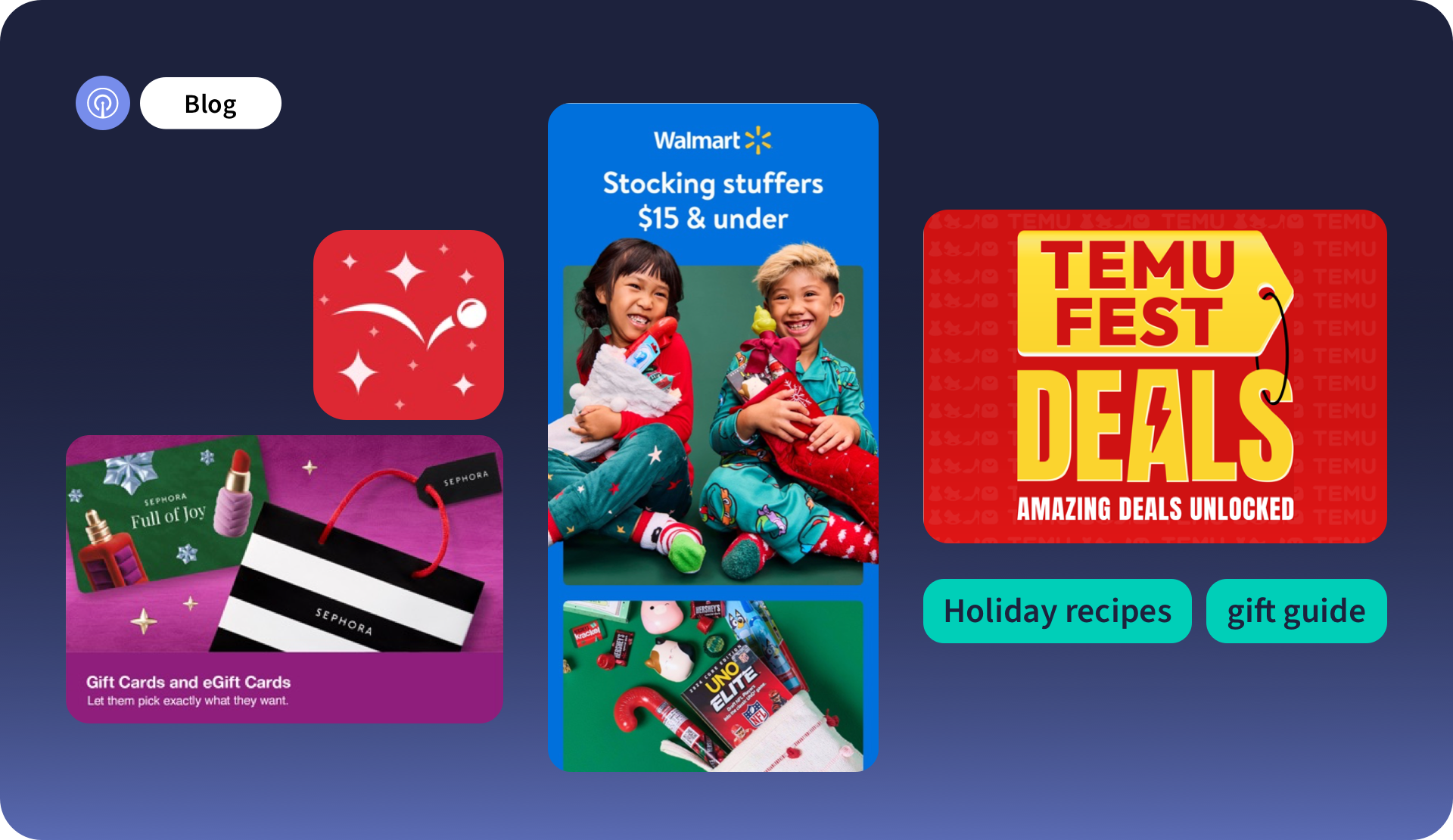Predictions for the Digital Economy in 2026 Report is Live!
Mobile App Insights · Lucy Greider · October 2025
Holiday ASO Best Practices for 2025 — 5 Quick Tips to Maximize Success
Retailers are starting their holiday promo earlier and earlier each year. To help you win over as many holiday shoppers as possible, here are five easy steps you can take to maximize your app store visibility — including industry-specific tips for pet, shopping, and grocery brands.

The holiday season is one of the most competitive times of the year for retail brands across verticals, as companies race to capture consumer attention (and dollars) through paid and organic efforts alike. Sensor Tower data shows that in 2024, ad spend from shopping brands alone increased by 53% from October 1st to December 2nd, before falling again.
But while strategic ad campaigns can do a great job of funneling people to your app, just as important is maintaining a top-tier App Store Optimization strategy — so that the right users are able to discover your app organically, and the ones who come from paid campaigns are more likely to convert. Here we’ll walk through five tips for optimizing your app store pages to achieve maximum discoverability during one of the busiest shopping seasons of the year.
Step 1 - Refresh your visuals
The visuals featured in your app store page are one of the first things customers will notice. If they’re bland, uninspired, or simply not relevant to their query, they’re likely to drop off. It’s best practice to regularly update app icons, screenshots, and feature graphics to optimize performance — but this is especially crucial around key seasonal events. Even small design tweaks can help your app stand out in search results, appeal to users who are in a holiday shopping mindset, and get customers excited about any current deals or promotions you have going on.
Pet Brands: To capture people buying gifts, treats, or holiday photos for pets, try cutesy visuals that communicate warmth and giftability — think a dog in a Santa hat.
Shopping Brands: Users hunting deals, flash sales, or gifting guides will gravitate towards promo-based imagery that showcases sales banners, wishlists, or gift sections.
Grocery Brands: For users planning meals, parties, or last-minute deliveries, try displaying pictures of holiday meals, or recipe ingredients that evoke festive cooking.
Step 2 - Revisit keywords + metadata with seasonal terms
Huge waves of people will be searching for holiday-specific sales and products in the lead-up to the colder months. You want the messaging featured in your metadata — including your app name, subtitle, promotional text and description — as well as your keywords, to capture as many of these queries as possible. Not only will you boost discoverability, but these seasonally relevant enhancements can prod customers to choose your brand over another.
Pet Brands: Add “pet gifts”, “holiday treats” or “stocking stuffers”
Shopping Brands: Include “Black Friday sale”, “gift guide” or “holiday sale”
Grocery Brands: “Holiday recipes”, “party platters”, “Christmas dinner”
Step 3 - A/B test store pages ahead of high-volume shopping weeks
Certain weeks experience more high-volume shopping activity than others — think the lead-up to Black Friday, or the two weeks before Christmas. To make sure you’re as prepared as possible, consider A/B testing store pages ahead of time. Evaluate how even minute changes to visuals, copy, and keywords can impact store rankings and conversion rates, so that when the competition heats up and the purchase floodgates open, you’re ready with the most impactful page possible.
Pet Brands: Try testing festive icons (snowflakes, ornaments) against neutral ones to gauge the impact on your conversions.
Shopping Brands: Compare discount-driven copy to more basic lifestyle messaging to measure any lift in performance.
Grocery Brands: Try visuals featuring delivery vs. pickup messaging, or explicitly-festive meals compared to everyday recipes.
Step 4 - Sync app store content + paid advertising efforts
Already have a successful paid campaign running? Great. The next step is to ensure the messaging and offers in your ads align with the branding and visuals featured on your app store page. Consistency across visuals, value propositions, and tone between organic and paid efforts means that when users click on your ad, they’re being funneled to a page that matches their expectations — making them more likely to click “Download.”
Pet Brands: Ads featuring, for example, holiday pet portraits, should match store screenshots exhibiting those same items.
Shopping Brands: Deals or promotions featured in paid efforts should be immediately visible once a user is funneled to your app store page.
Grocery Brands: Coordinate ad promises about delivery time or holiday savings with your app store description text.
Step 5 - Track performance improvements + optimize for next year
Once the season comes to an end, you’ll want to do a post-mortem to track exactly how well your efforts paid off, including any potential areas for improvement. Track any increases to your app store rankings, conversion rates, and engagement to gauge what worked and what didn’t — so that next year you can start off in an even stronger position.
Pet Brands: Compare installs and engagement attributed to gifting keywords compared to year-round terms.
Shopping Brands: Measure any conversion lift stemming from the use of holiday visuals
Grocery Brands: Review spikes in queries related to specific recipe or delivery keywords and consider utilizing them again next year
Once your updates are live, you can use Sensor Tower’s platform to monitor how they’ve influenced discoverability and user acquisition. Track changes to keyword visibility, downloads, and app store rankings to see just how much your festive efforts moved the needle — and then come back even stronger next year.
